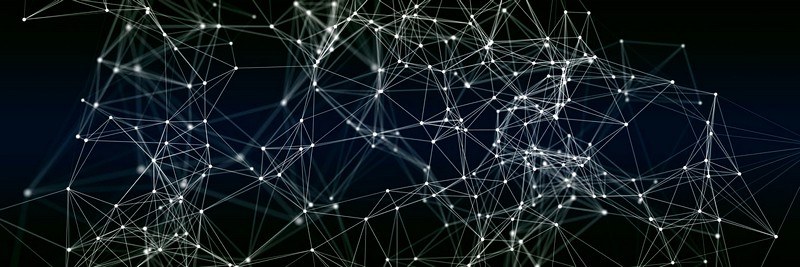
Introduction to Recurrent Neural Networks
Recurrent Neural Networks (RNNs) have gained significant attention in the field of deep learning due to their ability to effectively model sequential data. Unlike traditional feedforward neural networks, RNNs have connections that form directed cycles, allowing them to exhibit temporal dynamic behavior.
One of the key features of RNNs is their capability to maintain a form of memory, or context, about the input data they have seen. This memory enables RNNs to make predictions based on the sequential nature of the data, making them suitable for tasks such as language modeling, time series prediction, and speech recognition.
However, traditional RNNs are known to struggle with capturing long-term dependencies in sequential data, primarily due to the vanishing or exploding gradient problem. This limitation led to the development of a specialized RNN architecture known as Long Short-Term Memory (LSTM), which is designed to address the issue of capturing long-range dependencies.
The Architecture of LSTM
LSTM is a type of RNN architecture that is composed of individual memory cells, which have the unique ability to maintain information over long periods of time. The key to LSTM's effectiveness in capturing long-term dependencies lies in its complex internal structure and the way it handles the flow of information through its cells.
At the core of an LSTM unit are three essential components: the input gate, the forget gate, and the output gate. These gates are responsible for regulating the flow of information into and out of the memory cell, allowing LSTM to selectively remember or forget information as needed.
When a new input is observed, the input gate controls the extent to which the input is written to the memory cell. Meanwhile, the forget gate determines what information should be discarded from the cell, and the output gate controls the extent to which the cell's content is used to compute the network's output at a given time step.
In addition to these gates, LSTM cells also contain a 'cell state' that runs parallel to the hidden state. The cell state acts as a conveyor belt, transporting information across time steps with minimal modification. This enables LSTM to preserve the long-term dependencies in the data, as the cell state can carry relevant information without being subject to the loss of gradients over time.
Training and Learning in LSTM
The training process of an LSTM network involves optimizing its parameters, including the weights and biases within the network, to minimize the difference between the predicted output and the actual target. This is typically achieved through the use of backpropagation through time (BPTT), a variant of the standard backpropagation algorithm that is used to train RNNs.
During the training process, LSTM networks are capable of learning the appropriate time dependencies in the data, thanks to their ability to retain context over long sequences. This is in stark contrast to traditional RNNs, which often struggle with capturing long-term dependencies due to the diminishing or amplifying gradients as the error is backpropagated through time.
The effectiveness of LSTM in learning long-term dependencies has made it a popular choice for various applications, including natural language processing, machine translation, speech recognition, and more. Its ability to effectively capture context and understand the sequential nature of data has paved the way for significant advancements in these domains.
Applications of LSTM
LSTM has found widespread applications in various domains, showcasing its versatility and effectiveness in modeling sequential data. One of the prominent areas where LSTM has excelled is natural language processing (NLP), where it has been used for tasks such as language modeling, text generation, sentiment analysis, and named entity recognition.
In machine translation, LSTM has played a pivotal role in enabling more accurate and context-aware translations between different languages. Its ability to capture long-range dependencies allows it to consider the entire input sentence when generating the translated output, resulting in more coherent and accurate translations.
Furthermore, LSTM has been leveraged in speech recognition systems to effectively model the sequential nature of speech signals. By capturing the nuanced temporal dependencies in speech data, LSTM-based models have achieved significant improvements in automatic speech recognition accuracy, paving the way for more advanced voice interfaces and speech-to-text applications.
Significance of LSTM in Deep Learning
The development of LSTM has significantly contributed to the advancement of deep learning, particularly in tasks that involve sequential data. Its ability to address the challenge of capturing long-term dependencies has opened doors to more sophisticated and context-aware applications across various domains.
Moreover, the success of LSTM has inspired further research and innovation in the realm of recurrent neural networks, leading to the development of more advanced architectures such as Gated Recurrent Units (GRUs) and Neural Turing Machines. These advancements have pushed the boundaries of what is achievable with sequential data, fueling the rapid evolution of machine learning and artificial intelligence.
In essence, LSTM stands as a testament to the power of specialized architectural design in neural networks, showcasing how a well-crafted structure can overcome longstanding challenges and unlock new possibilities in the world of deep learning.
Challenges and Future Directions
While LSTM has undoubtedly made remarkable strides in capturing long-term dependencies and modeling sequential data, it is not without its limitations. One of the key challenges lies in managing the computational complexity and memory requirements of LSTM networks, especially when dealing with extremely long sequences or large-scale datasets.
Furthermore, there is ongoing research aimed at enhancing the capabilities of LSTM and addressing its limitations. This includes exploring techniques to improve training efficiency, adaptability to different data modalities, and generalization to diverse tasks. Additionally, there is a growing interest in developing hybrid architectures that combine the strengths of LSTM with other neural network variants to create more robust and versatile models.
As the field of deep learning continues to evolve, it is anticipated that LSTM will continue to undergo refinements and innovations, further solidifying its position as a cornerstone in the realm of sequential data modeling and analysis.

